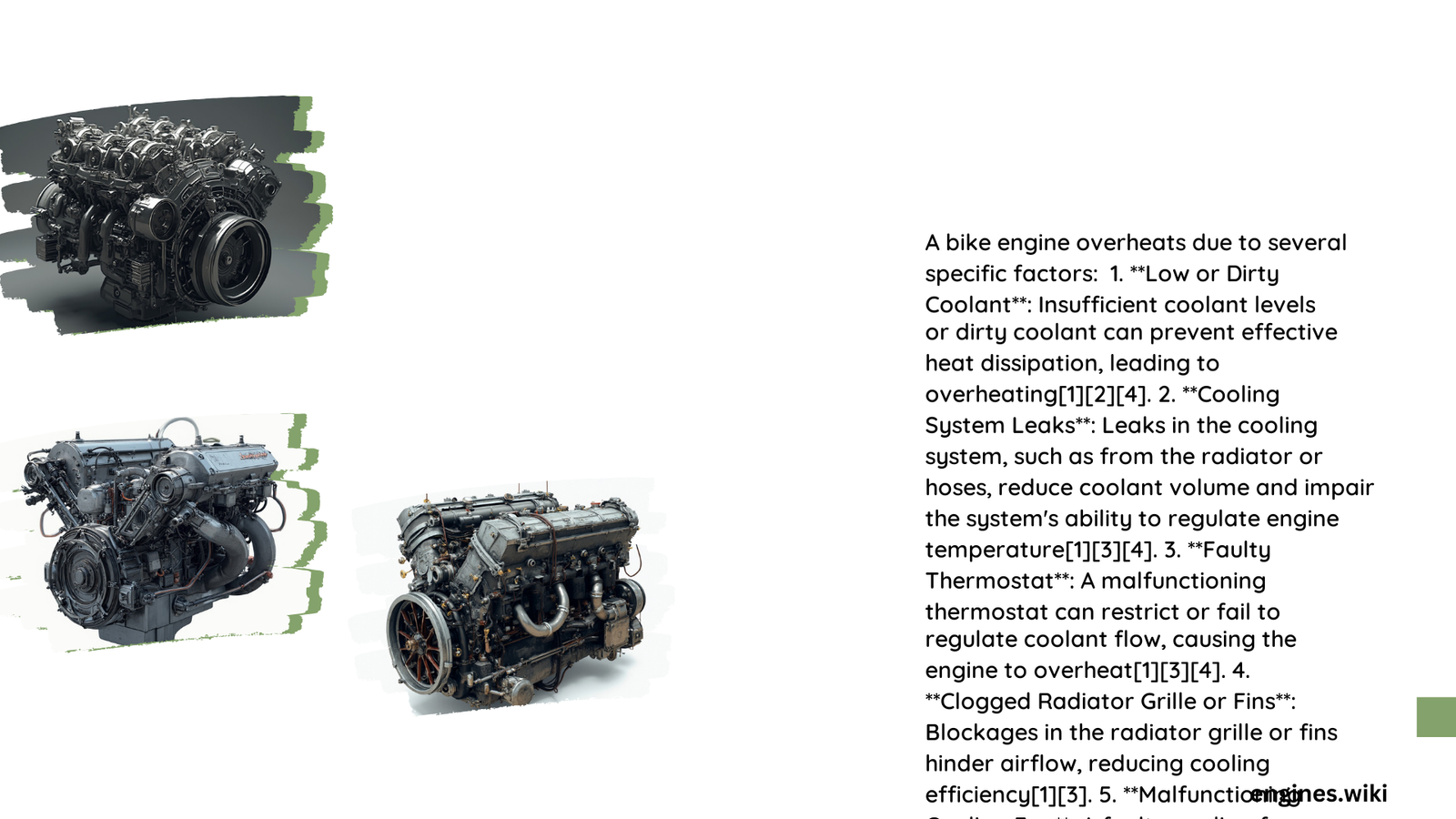Bike engine overheating is a common issue that can lead to serious damage if not addressed promptly. This problem occurs when the engine’s temperature exceeds its normal operating range, typically due to cooling system failures, inadequate lubrication, or excessive engine load. Understanding the causes of engine overheating is crucial for maintaining your motorcycle’s performance and longevity. This article explores the various factors contributing to bike engine overheating and provides practical solutions to prevent and address this issue.
Why Does a Bike Engine Overheat?
What Are the Normal Operating Temperatures for a Motorcycle Engine?
Motorcycle engines are designed to operate within specific temperature ranges to ensure optimal performance and longevity. Understanding these ranges is crucial for identifying potential overheating issues:
- Normal operating range: 195°F to 220°F (90°C to 104°C)
- Maximum safe temperature: 240°F to 280°F (115°C to 138°C)
Temperatures exceeding these thresholds can indicate overheating and potential engine damage.
How Does Engine Load Affect Temperature?
Engine load plays a significant role in heat generation and can contribute to overheating:
- Hard riding (high RPM through gears)
- Carrying excessive weight
- Pushing the engine beyond its limits
These conditions force the engine to work harder, generating more heat than the cooling system can effectively dissipate.
What Role Does Ambient Temperature Play in Engine Overheating?
External temperatures can significantly impact your bike’s engine temperature:
- High ambient temperatures reduce cooling system efficiency
- Hot weather makes it harder for the engine to maintain optimal temperatures
During hot days, it’s essential to be more vigilant about your engine’s temperature and take necessary precautions.
How Does the Cooling System Contribute to Engine Overheating?

What Are the Key Components of a Motorcycle Cooling System?
Understanding the cooling system components is crucial for diagnosing and preventing overheating:
- Radiator
- Coolant
- Water pump
- Thermostat
- Cooling fans (in some models)
Each component plays a vital role in maintaining optimal engine temperature.
How Do Coolant Issues Lead to Overheating?
Coolant-related problems are a common cause of engine overheating:
| Issue | Impact |
|---|---|
| Low coolant levels | Reduced heat dissipation |
| Wrong coolant type | Decreased cooling efficiency |
| Coolant leaks | Loss of cooling capacity |
| Stale or dirty coolant | Reduced heat absorption |
Regular coolant checks and maintenance are essential for preventing these issues.
What Are the Signs of a Malfunctioning Thermostat?
A faulty thermostat can disrupt coolant flow and cause overheating. Signs include:
- Engine temperature fluctuations
- Coolant leaks around the thermostat housing
- Engine overheating at idle but cooling when moving
If you notice these symptoms, have your thermostat checked and replaced if necessary.
How Does Engine Oil Affect Engine Temperature?
Why Is Proper Oil Viscosity Important for Engine Cooling?
Engine oil plays a crucial role in heat dissipation and lubrication:
- Correct viscosity ensures proper oil flow and heat transfer
- Wrong viscosity can increase friction and heat generation
Always use the manufacturer-recommended oil viscosity for your motorcycle.
How Often Should Engine Oil Be Changed to Prevent Overheating?
Regular oil changes are essential for maintaining engine health and preventing overheating:
- Follow manufacturer-recommended oil change intervals
- Change oil more frequently in harsh riding conditions
- Use high-quality oil designed for motorcycle engines
Fresh oil maintains its heat-dissipating properties and reduces the risk of overheating.
What Role Do Clogged Radiators Play in Engine Overheating?
How Do Radiators Become Clogged Over Time?
Radiator clogs can develop due to various factors:
- Debris and dirt accumulation
- Corrosion buildup
- Use of incorrect or degraded coolant
Regular radiator cleaning and maintenance can prevent clog formation.
What Are the Signs of a Clogged Radiator?
Identifying a clogged radiator early can prevent severe overheating issues. Look for:
- Reduced coolant flow
- Engine temperature rising quickly
- Visible debris or corrosion in the radiator
- Coolant leaks or overflow
If you notice these signs, have your radiator inspected and cleaned or replaced if necessary.
How Can Radiator Maintenance Prevent Engine Overheating?
Proper radiator maintenance is crucial for preventing overheating:
- Regular cleaning to remove debris and buildup
- Flushing the cooling system periodically
- Inspecting for leaks and damage
- Using the correct coolant type and mixture
Investing in radiator maintenance can save you from costly engine repairs due to overheating.
By understanding the causes of bike engine overheating and implementing proper maintenance practices, you can ensure your motorcycle runs smoothly and avoid potentially expensive repairs. Regular checks of your cooling system, engine oil, and radiator, along with mindful riding habits, will go a long way in preventing engine overheating issues.
References:
1. MotoDeal: What causes motorcycle engine overheat?
2. Bikepics: Overheating Motorcycle Engine? 9 Reasons Why & How to Fix
3. Motorcycle Guidelines: How Hot Does a Motorcycle Engine Get : Max Temp Tips for Riders
